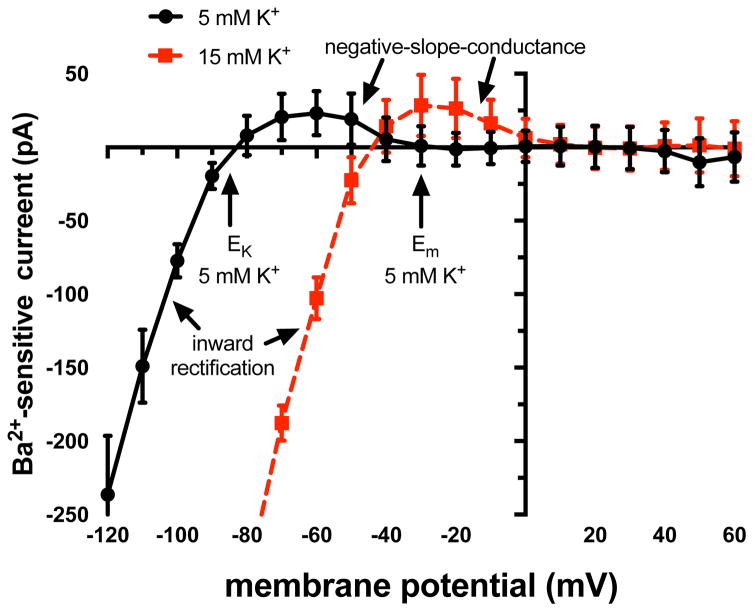Figure 2.
KIR currents in arteriolar endothelial cells. Shown are mean ± SE (n = 5) current-voltage (I–V) relationships for Ba2+ -sensitive currents recorded from enzymatically isolated endothelial cell tubes (see [55] for more information). At membrane potentials (Ems) negative to the K+ equilibrium potential (EK), inward currents are carried by the channels (inward rectification). At membrane potentials positive to EK, outward currents are carried by the channels, however, the outward currents diminish as the membrane becomes more positive producing a region of negative slope conductance, where hyperpolarization increases outward current flow through the channels. At normal resting Em (5 mM K+ outside and 140 mM K+ inside, ~−30 mV), little current flows through these channels due to block by intracellular polyamines and Mg2+. However, membrane hyperpolarization will recruit current through the channels and amplify the initial hyperpolarization. Also shown is the shift in the I–V relationship with an increase in extracellular K+ (due to the shift in EK). Note that at the resting level of Em (−30 mV) with 15 mM K+ outside, there is now outward current through KIR channels that will tend to hyperpolarize the membrane toward the new EK. Data from [55] and graph modified from the same publication, with permission.

